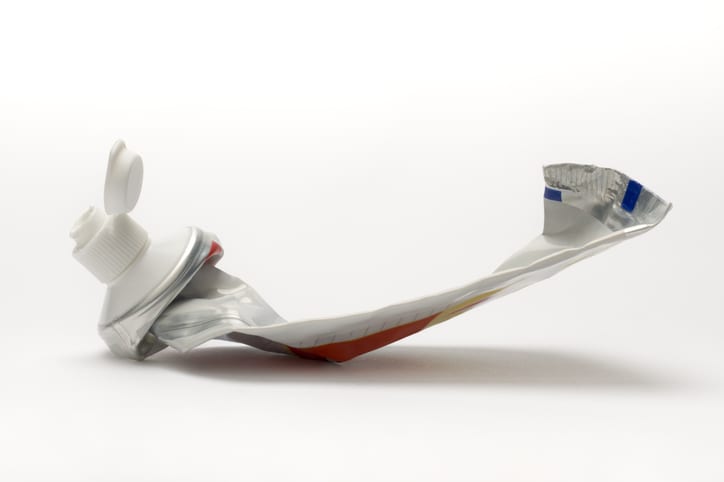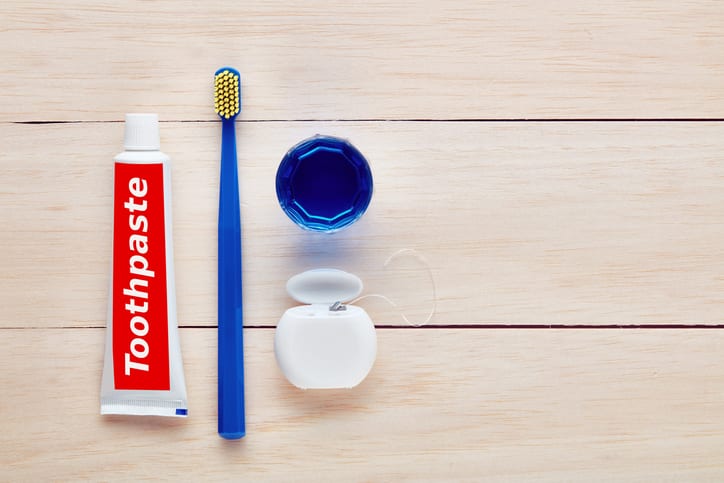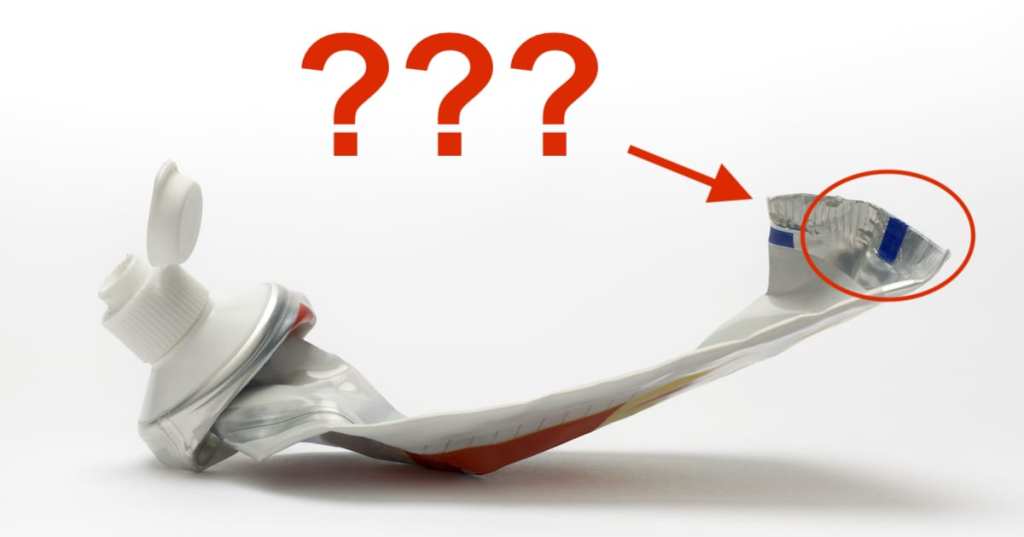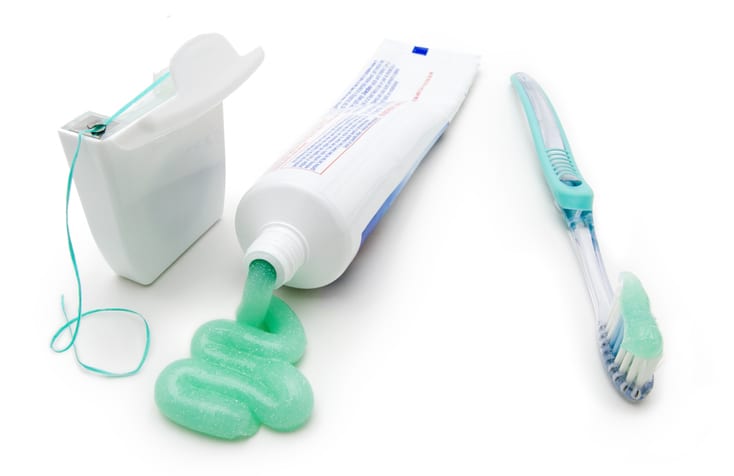Trending Now
Did you know there are color codes on your boxes of toothpaste, or are you like me, and have been clueless your entire life?
One of the things I love about the internet is getting to learn new, obscure facts on an almost daily basis – and sometimes they’re even things that will affect my life on a daily basis going forward!
But not this time.

Image Credit: iStock
I guess there’s been a graphic rolling around the internet that claims to interpret the meaning behind the colored markings on the bottom of toothpaste tubes -and while the markings are definitely there, Snopes says the meaning behind them isn’t all that interesting.
While the internet suggested that the colors on the tube’s seams correlate to types of ingredients – natural (green), natural and medicine (blue), natural and chemical (red), and pure chemical (black) – there’s actually no truth to it.
The markings have nothing to do with the toothpaste’s ingredients, and even if they did, simple classifications like “natural” and “chemical” are really to broad to mean anything significant.

Image Credit: iStock
The real reason the colors are there is to aid the machines as they’re putting the packaging together.
Tiny colored rectangles are called “eye marks,” or “color marks,” and they tell light beam sensors where to cut or fold the tube.
Once the toothpaste is all boxed up, the marks don’t mean anything at all.
If you are curious about the ingredients in your toothpaste, Colgate promises you don’t need a degree in codebreaking.
“Oral care companies don’t mark their toothpastes with colored squares trying to trick consumers and hide ingredients from them.
If you want to know what kind of ingredients your toothpaste has, don’t look for a colored block at the end of the tube.
Instead, take a look at the packaging for a comprehensive list of ingredients.”
The ingredients should be listed on the outside of the box and on the outside of the tube, and if you need help deciphering what’s what, you can just Google it.
Mystery solved!







